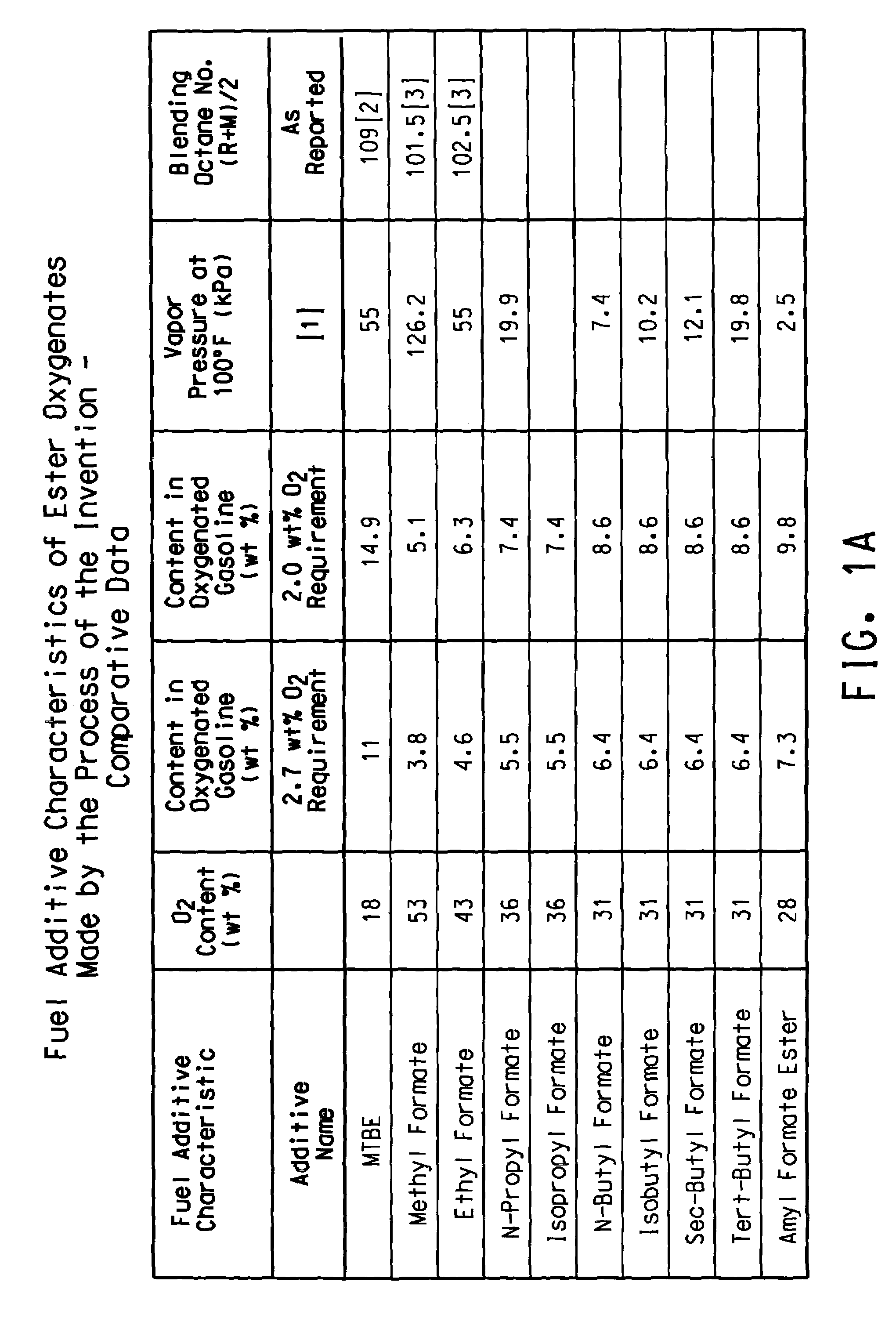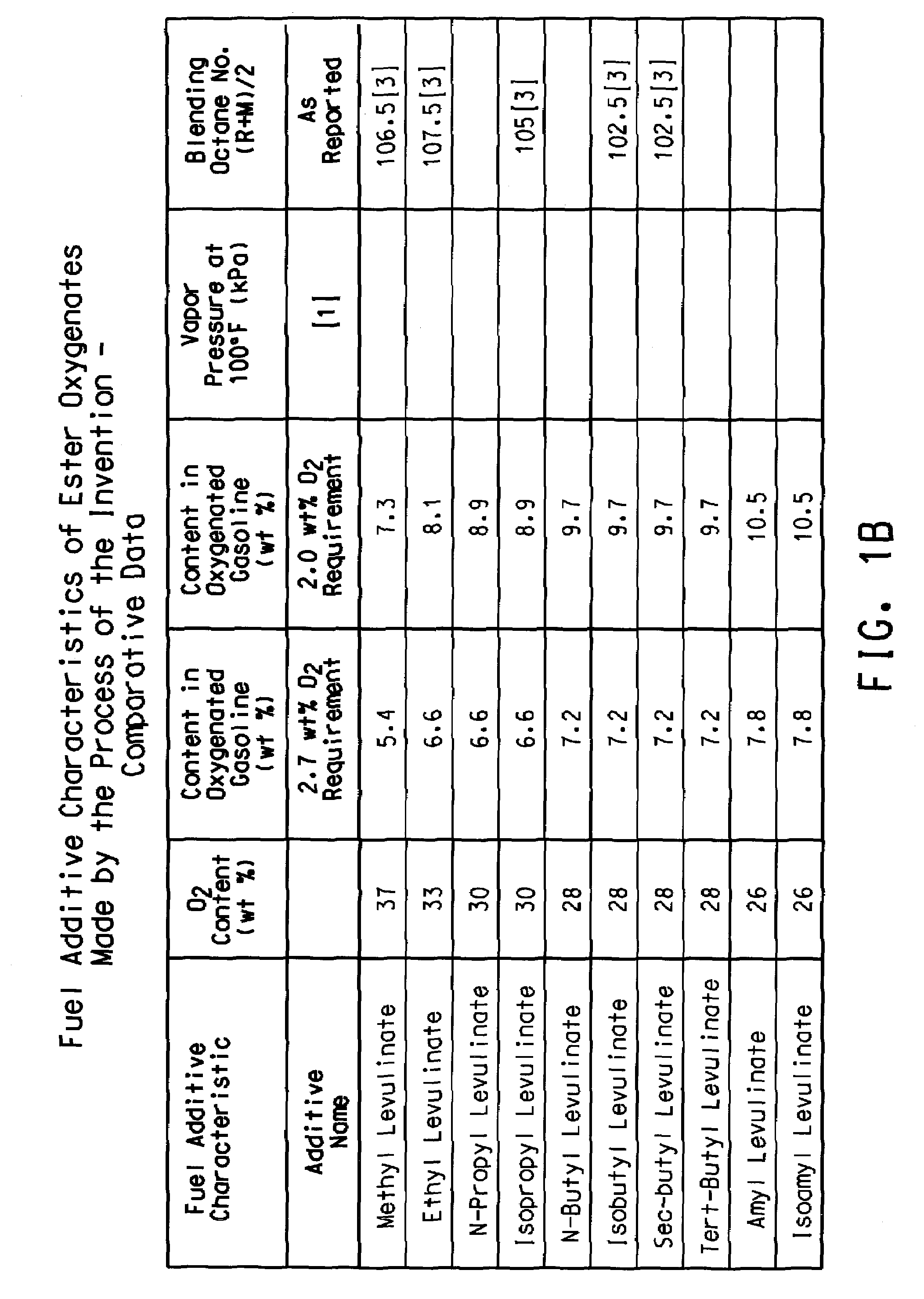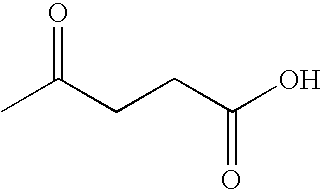Preparation of levulinic acid esters and formic acid esters from biomass and olefins
a technology of levulinic acid and esters, which is applied in the field of preparation of levulinic acid esters and formic acid esters from biomass and olefins, can solve the problems of low yield of levulinic acid obtained from most synthetic methods, high cost of raw materials needed for synthesis, and low commercial significance of levulinic acid
- Summary
- Abstract
- Description
- Claims
- Application Information
AI Technical Summary
Benefits of technology
Problems solved by technology
Method used
Image
Examples
example 1
Levulinic Acid and Formic Acid Conversion to Levulinate and Formate Esters by Reaction with Olefins
[0069]A 5 cc autoclave is charged with 2 cc of an aqueous solution containing 2 mmoles of levulinic acid and 2 mmoles of formic acid. 5 wt. % sulfuric acid is added as a catalyst. The reactor is pressurized to 0.69 MPa with 1-butene and heated to 100° C. for 2 hours while maintaining a constant pressure of 1-butene. After cooling, the organic phase is separated. A mixture of butyl formate and butyl levulinate is formed as product.
example 2
Levulinic Acid and Formic Acid Conversion to Levulinate and Formate Esters by Reaction with Olefins in the Presence of a Hydrocarbon Phase
[0070]A 5 cc autoclave is charged with 1 cc of iso-octane and 1 cc of an aqueous solution containing 2 mmoles of levulinic acid and 2 mmoles of formic acid. 5 wt. % sulfuric acid is added as a catalyst. The reactor is pressurized to 0.69 MPa with 1-butene and heated to 100° C. for 2 hours while maintaining a constant pressure of 1-butene. After cooling, the organic phase is separated. A mixture of butyl formate and butyl levulinate is formed as product.
example 3
Levulinic Acid and Formic Acid Conversion to Levulinate and Formate Esters by Reaction with Olefins in the Presence of a Hydrocarbon Phase
[0071]A 5 cc autoclave is charged with 1 cc of heptane and 1 cc of an aqueous solution containing 2 mmoles of levulinic acid and 2 mmoles of formic acid. 5 wt. % sulfuric acid is added as a catalyst. The reactor is pressurized to 0.69 MPa with 1-butene and heated to 150° C. for 0.5 hours while maintaining a constant pressure of isobutene. After cooling, the organic phase is separated. A mixture of butyl formate and butyl levulinate is formed as product.
PUM
| Property | Measurement | Unit |
|---|---|---|
| pKa | aaaaa | aaaaa |
| pKa | aaaaa | aaaaa |
| temperature | aaaaa | aaaaa |
Abstract
Description
Claims
Application Information
 Login to View More
Login to View More - R&D
- Intellectual Property
- Life Sciences
- Materials
- Tech Scout
- Unparalleled Data Quality
- Higher Quality Content
- 60% Fewer Hallucinations
Browse by: Latest US Patents, China's latest patents, Technical Efficacy Thesaurus, Application Domain, Technology Topic, Popular Technical Reports.
© 2025 PatSnap. All rights reserved.Legal|Privacy policy|Modern Slavery Act Transparency Statement|Sitemap|About US| Contact US: help@patsnap.com



